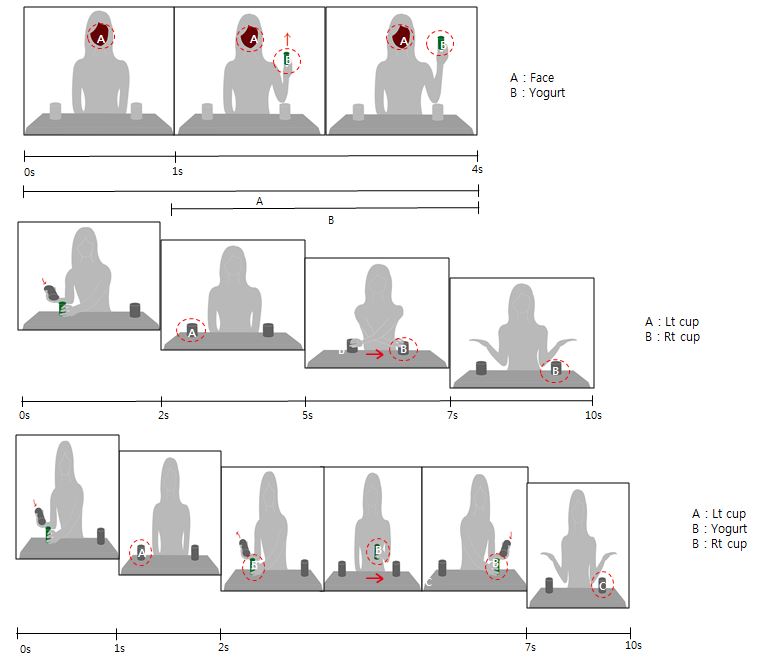Developmental Disorder Detection with Joint Attention & Object Permanence for Pre-term Infants(submitted to Journal of Paediatrics)Garam Han, Jaeran Choi, Hyungjoo Lee, and Hokyoung Ryu
|
Descriptions: The experiment took place in a dedicated treatment room, where two 19” monitors and one eye-tracker (Tobii© X2-60) were set up. The eye-tracker was attached at the bottom of the monitor (i.e., the stimulus monitor) that the infant was gazing, and all the stimuli used in this experiment were given on the monitor. The other one (i.e., the experimenter monitor) was for the experimenter to control the experimental session. The infants were seated on the parent’s lap, approximately 60cm distant from the stimulus monitor. If they were not able to keep this 60cm distance, they were seated on the desk and the parents kept them on holding from the back. All the eye movements were recorded using Tobii© X2-60 eye-tracker that has 0.4˚ gaze accuracy at 60Hz sampling rate. The stimulus video plays the actress face for one second and then the actress picks a yogurt bottle up at the shoulder height with a verbal indication. Instead, both Stimulus Two and Three include object permanence. In Stimulus Two, the actress picks up the yogurt bottle up, and hides it in the left cup, then reverses the two cups on the table. In this stimulus, the infants believe that the left cup and the yogurt bottle are the same object, so following the moving object (i.e., both the left cup and the yogurt bottle) is seen as a basic level of object permanence. By comparison, in Stimulus Three , the actress initially hides the yogurt bottle in the left cup. In a few second later, she hides the yogurt bottle in the other cup, saying “I am hiding it again.” Here, the infants need to employ a higher level of cognitive capability to simultaneously manage two hiding instances (i.e., the yogurt bottle in the left cup, and the yogurt bottle in the right cup) and object permanence (i.e., while they can observe the yogurt bottle is moving from the left to the right cup) as they retrieve where the hidden object is located. The experiment found that pre-term infants would be less perfectly to handle object permanence and joint attention. |
| To read more, please contact me via email. |
